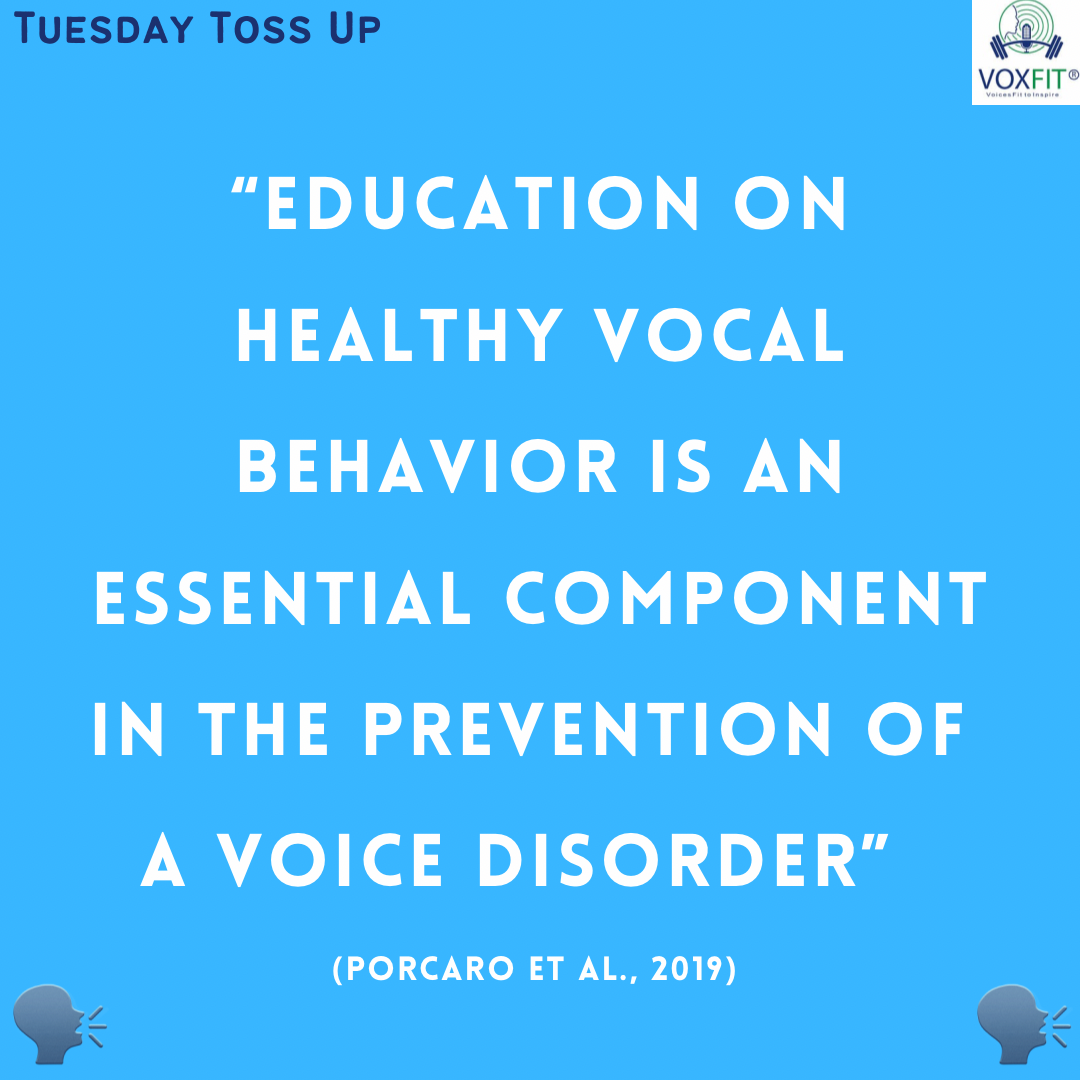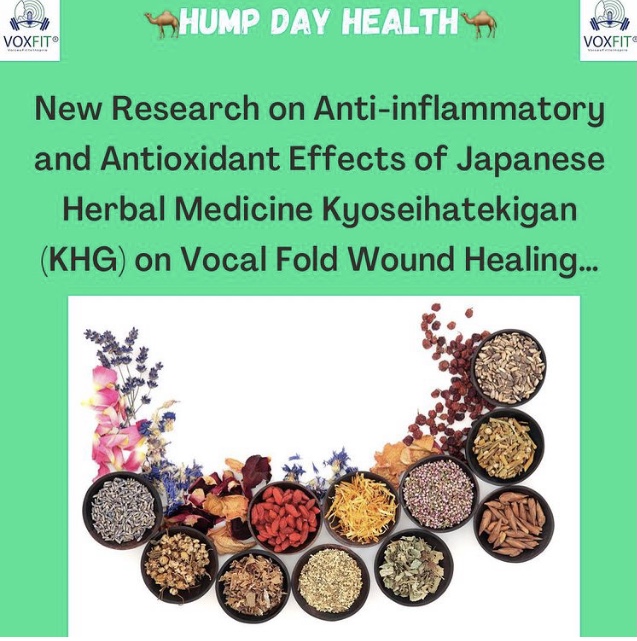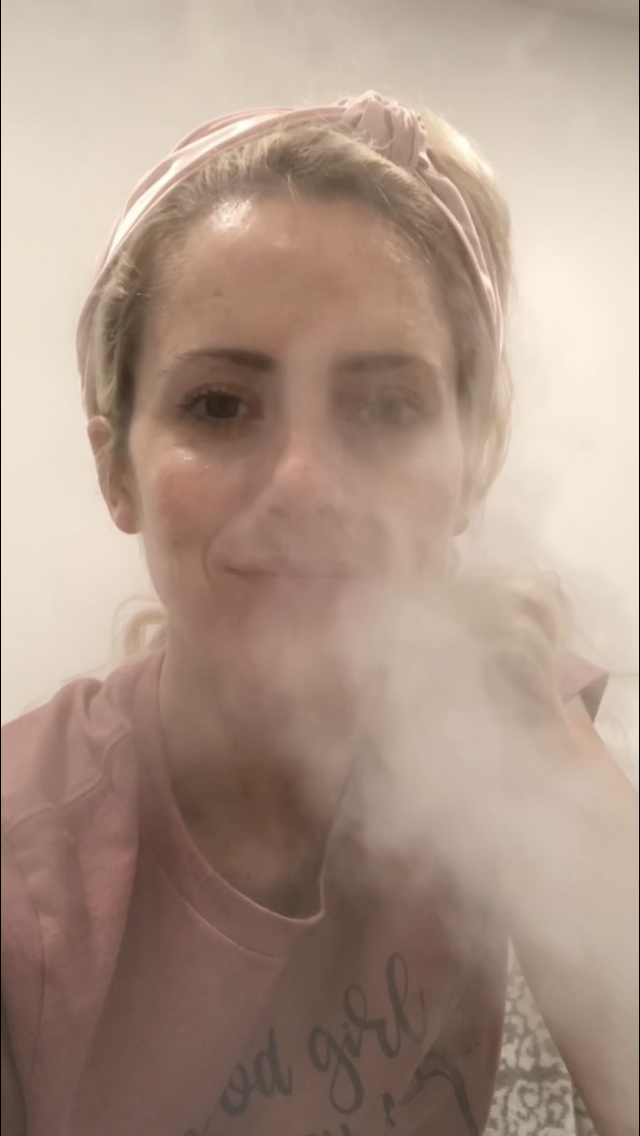Education on Healthy Vocal Behavior, New Research on Japanese Herbal Medicine, and New Years PYV (STEAM)!
The Week of Jan 10th BLOG:
TUESDAY TOSS UP:
Education on Healthy Vocal Behavior
.
“Education on healthy vocal behavior is an essential component in the prevention of a voice disorder” (Porcaro et al., 2019).
.
A 2007 study analyzed subject knowledge of vocal hygiene in groups of 17 dysphonic and 17 vocally healthy participants. The researchers found that the healthy group scored higher on their knowledge of the topic than the dysphonic group did, which suggests that AWARENESS of vocal hygiene can make a DIFFERENCE in VOCAL HEALTH (Fletcher et al.).
.
Another study (Chan, 1994) found that teachers who participated in a vocal hygiene program showed significant improvement of their voice acoustically and as measured by electroglottographic parameters and those that did not participate showed no significant change in their voices.
.
If, as an OCCUPATIONAL VOICE USER, your VOICE is your INSTRUMENT—YOUR VEHICLE for delivery of your important message(s) and mission, WHY would you not learn all you can to help you PRIORITIZE its health, efficiency, and SUCCESS?
.
VOICE is a defining characteristic of one’s identity. Studies have shown that intonation, loudness, and overall quality of voice can not only affect how others perceive a person’s age and gender, but also impact interpretation of a person’s emotional state and personality (Babel & McGuire, 2015; Scherer et al., 2001). Lortie et al. (2018) found that speakers whose voices are negatively evaluated on psychosocial dimensions, or auditory perceptual dimensions such as breathiness or roughness, may be negatively evaluated on other domains, such as the listener’s DESIRE TO INTERACT WITH THEM.
.
If your goal (as an OCCUPATIONAL VOICE USER) IS to INTERACT with others and create profound and lasting IMPACT on them, your VOICE plays a monumental role in this mission, AND it is of utmost importance that your VOICE reflects this mission. I KNOW this is a huge goal of mine as a speech pathologist, fitness instructor, teacher/coach, and public speaker. Based on the above research, prioritizing not only the health and efficiency and dynamics of your VOICE relative to your profession/occupation is incredibly important, but so is your COMMITMENT to educating yourself all you can to prevent voice disorders AND enhance and amplify your wonderful, most authentic VOICE!
.
Voice friends, fellow occupational voice users, and fellow fitness instructors too: EDUCATION is POWER. Learn all you can about your beautiful instrument (your VOICE!) and all the amazing ways you can PROTECT and USE it to INSPIRE others and continue your MISSION.

HUMP DAY HEALTH:
New Research on Anti-inflammatory and Antioxidant Effects of Japanese Herbal Medicine Kyoseihatekigan (KHG) on Vocal Fold Wound Healing…
.
Vocal fold (VF) fibrosis occurs as a result of excessive accumulation of extracellular matrix including type I collagen and decreased hyaluronic acid (HA); this results in contraction and disruption of the layered structure of the lamina propria of the vocal folds and can substantially reduce pliability of the vocal folds, thus decreasing their ability to vibrate during phonation (which directly impacts quality of voice!).
.
Vocal fold fibrosis can cause dysphonia that significantly impacts quality of LIFE. There is still no definitive treatment for existing vocal fold fibrosis and thus prevention is critically important. Steroid injection has long been used to treat skin scarring (Ketchum et al.,1966) and a 2019 study by Ying-Chieh Hsu et al. found that vocal fold steroid injection appeared to be associated with improvements in mucosal wave, voice quality, and subjective perception of dysphonia in patients with fibrosis after surgery with outcomes comparable to those of patients without fibrosis.
.
Ozawa et al. (2021) reminds us that it is important to minimize the wound healing reaction, including inflammation and oxidative stress, to prevent long term scar formation. “Fibrosis is preceded by an inflammatory response that begins immediately after injury or infection. Inflammation and reactive oxygen species (ROS) are necessary to successfully respond to the causative factor and promote tissue repair, BUT exaggerated or prolonged inflammation and excessive ROS can lead to abnormal signaling that transforms the normal wound healing process into a profibrotic process. Therefore, strict regulation of inflammation and oxidative stress is critical for prevention of vocal fold fibrosis”. Previous studies have shown anti-inflammatory or antioxidant agents ameliorate vocal fold trauma or injury, and the 2021 study mentioned above examined the effects of KHG on vocal fold wound healing (using a rat model) by histological assessment and gene expression analysis related to inflammation and fibrosis.
.
Kyoseihatekigan (KHG) is a Kampo medicine (Japanese traditional herbal medicine) that has been used “to treat hoarse voice and throat discomfort due to laryngitis resulting from a cold or excessive singing or shouting” (Ozawa et al., 2021). Kampo medicine has been used for centuries in Japan as a complementary, alternative treatment approach. "It consists of extracts of multiple crude drugs, each with different targets, and it has the advantage of modulating multiple pathways simultaneously and producing synergistic effects in conditions with complex etiologies, like fibrosis". One example is Sho-saiko-to which inhibits liver fibrosis and because of its high quality and safety, the Japanese Ministry of Health, Labour and Welfare has approved it as a legal pharmaceutical product in Japan. Most modern Kampo medicines do not require preparation like traditional pharmaceuticals, and are easily prescribed by physicians and have become popular and accepted in Japan.
.
A previous study by (Takeno, 1992) showed that KHG treatment led to decreased symptoms in 80.4% of patients with acute or chronic pharyngitis who were experiencing pharyngeal discomfort and hoarseness with no side effects. KHG is a mixture of extracts from nine ingredients: forsythia fruit, platycodon root, glycyrrhiza, rhubarb, amomum seed, cnidium rhizome, myrobalan fruit, mentha herb, and gambir. The Takeno study also describes how each KHG ingredient has demonstrated multiple pharmacological activities in the past: forsythia fruit, platycodon foot, glycyrrhiza, and amomum seed inhibit pro-inflammatory cytokines while gambir, myrobalan fruit, mentha herb, and glycyrrhiza exert antioxidant activity. Several other investigators have suggested possible anti-inflammatory or antioxidant effects of these ingredients, but it is still unknown how KHG works on the vocal folds after injury. ...Enter the present study... *****Although I am NOT in agreement with animal testing, I am highlighting this study because of its findings especially related to possible positive impacts of herbal medicine on VF wound healing.*****
.
In short (although you can read the highlighted study for more details on the actual experiment—THERE ARE A LOT!), “rats were subjected to unilateral vocal fold injury and divided into three groups according to KHG dose. The KHG groups were fed the experimental diets from 4 days before vocal fold injury to 3 days postoperatively, whereas the sham group received a normal diet throughout the study. The timing of the KHG diet was selected to cover the critical periods of early wound healing when inflammatory response and antioxidant effects peak”.
.
Findings include:
*KHG restored hyaluronic acid and reduced cell infiltration on post injury day three (the sham group showed decreased hyaluronic acid and massive cell infiltration on post injury day three, but the KHG groups demonstrated hyaluronic acid restoration and less cell infiltration). Studies have also confirmed that acute inflammatory response and ROS play key roles in triggering fibrosis (Wynn et al., 2012; Kai et al., 2006) and these studies have observed the maximum cell infiltration on day three after injury of the vocal folds, and accumulation of a large amount of ROS until day three. The present study also confirmed that “vocal fold injury caused increases of cell infiltration and immunopositive areas on post injury day three, BUT that the KHG significantly reduced cell infiltration and immunopositive areas”.
.
*KHG reduced 4-HNE expression on post injury day three (4-HNE is a marker of ROS). KHG also altered gene expression on post injury day one (both KHG groups significantly suppressed the gene expression of pro-inflammatory cytokines as compared to the sham group). It also altered gene expression on post injury day five. Of note, “pro-inflammatory cytokines are molecular signals that coordinate the inflammatory response; exaggerated or prolonged inflammation induces overexpression of these cytokines, which is linked with fibrosis. Therefore, the results suggest that the early effects of KHG to suppress infiltrates of cells and proinflammatory cytokines during early phase of vocal fold wound healing are beneficial to prevent fibrosis in the following late phase”.
.
*KHG reduced collagen deposition and restored hyaluronic acid on post injury day 56 (sham group exhibited dense collagen deposition and marked decrease in hyaluronic acid, both of which were significantly mitigated in the KHG groups). Hyaluronic acid is regarded as another critical element that contributes in scarless wound healing, and an unfavorable event during vocal fold wound healing is the temporal decrease of hyaluronic acid in the lamina propria after injury. The current study indicated that (when compared to the sham group), both KHG groups significantly increased hyaluronic acid on post injury day three. “KHG histologically showed prevention of fibrosis with significant hyaluronic acid restoration and decreased collagen deposition compared to the sham group on day 56. There was significant suppression of a certain gene expression that is the key molecule of fibrosis on day five. Also, KHG treatment groups tended to suppress type 1 procollagen mRNA at day five and resulted in better wound healing at day 56 compared to the control/sham group”.
.
The prevention of vocal fold fibrosis remains a significant clinical challenge and this study demonstrates that KHG ameliorated vocal fold fibrosis by regulating both ROS and inflammation in a rat vocal fold injury model. "The current findings suggest that KHG has anti-inflammatory and antioxidant effects in the early phase of vocal fold wound healing, which can lead to better wound healing with less scar formation".

PRIORITIZE YOUR VOICE!
STEAMMMMM
It’s PRIORITIZE YOUR VOICE Fridayyyy!!!
.
.
How are YOU prioritizing your voice?!
.
.
Staying with the category of HYDRATION again this week ... but today we focus on STEAM.
.
In my humble opinion, steam is alwaaaaays SECOND to the use of an ultrasonic nebulizer (with 0.9% isotonic saline solution), like my faaaave VocalMist. Stay tuned for more on that.
.
Steam DOES provide immediate and direct hydration, BUT because the particles of moisture are somewhat large, they dissipate in the mouth, nose, and upper throat (aka they don’t make it all the way down to the VFs). Again, still hydrating and soothing... but not directly on the VFs. Research shows that use of an ultrasonic nebulizer (with saline as mentioned above) is the only way you can DIRECTLY hydrate the VFs (because it produces particles small enough to do so... and this is why you would use saline; if you use water and it goes right on your VFs you would choke). However, the moisture produced from steam DOES directly and immediately hydrate and soothe the areas of the nose, mouth, and upper throat, and this can positively impact the voice by thinning mucus, reducing irritation, and soothing dry tissues. It also helps with sinus and allergy symptoms AND provides a “good”, soothed, more comfortable feeling. It’s also good for the skin (bonus benefit)! I’m using a facial steamer here but you can also achieve the benefits of steam via steam shower, steam room, and/or even just boiling water and pouring that in a bowl over which you’ll hold your head and breathe through your nose (possibly with a towel over it).
.
.
I know I’ve mentioned the research that hydrated vocal folds vibrate with less effort and more efficiency...and anything that can possibly reduce mouth/nose/throat irritation, reduce thickness of mucus, and/or soothe dry tissues (that will ALL positively impact the way my voice FEELS— especially in these drier and cold months), I am ALL FOR! As much as I use my voice (for my “jobs” and otherwise... and I’m sure you do too!) and as much as I know the importance of “babying” the larynx, I want to ensure I do all I can to make it happen. So bring on the steaaam (especially if for some reason I can find my nebulizer)!
.
.
Do you use steam? Do you find any benefit?
.
#prioritizeyourvoice and try STEAM!


.
.
PS don’t forget every Friday is Prioritize Your Voice Friday and I encourage you to post on your story how you’re prioritizing your voice!… Tag me @voxfit_ and I’ll share... let’s start a vocal wellness movement and #inspireothers to prioritize their VOICE!!!
.
.
.
#voxfit #voice #hydrate #hydration #steam #vocalfitness #bevocallyfit #vocalhealth #vocalwellness #prioritizeyourvoicefriday #prioritizeyourvoice #protectyourvoice #healthyvoice #immunity #singer #fitnessinstructor #voicesfittoinspire #humpdayhealth #chooseyourbestvoice #sethydrationgoals #publicspeaker #speechpathologist #voicespecialist #awareness #beproactive #youcandoit #pyv #occupationalvoiceuser #becomeyourbestself #vocalsuccess #research #voicedisorder #vocalhygiene #KHG #japanesemedicine #herbalmedicine #vocalfoldhealing #scar #fibrosis #vocalfoldfibrosis #vocalfoldsurgery #healyourvoice #tuesdaytossup #tuesdaytips #educationispower #sovtes #vocalwarmup #vocalcooldown #teacher #speechpathologist #voicespecialist


